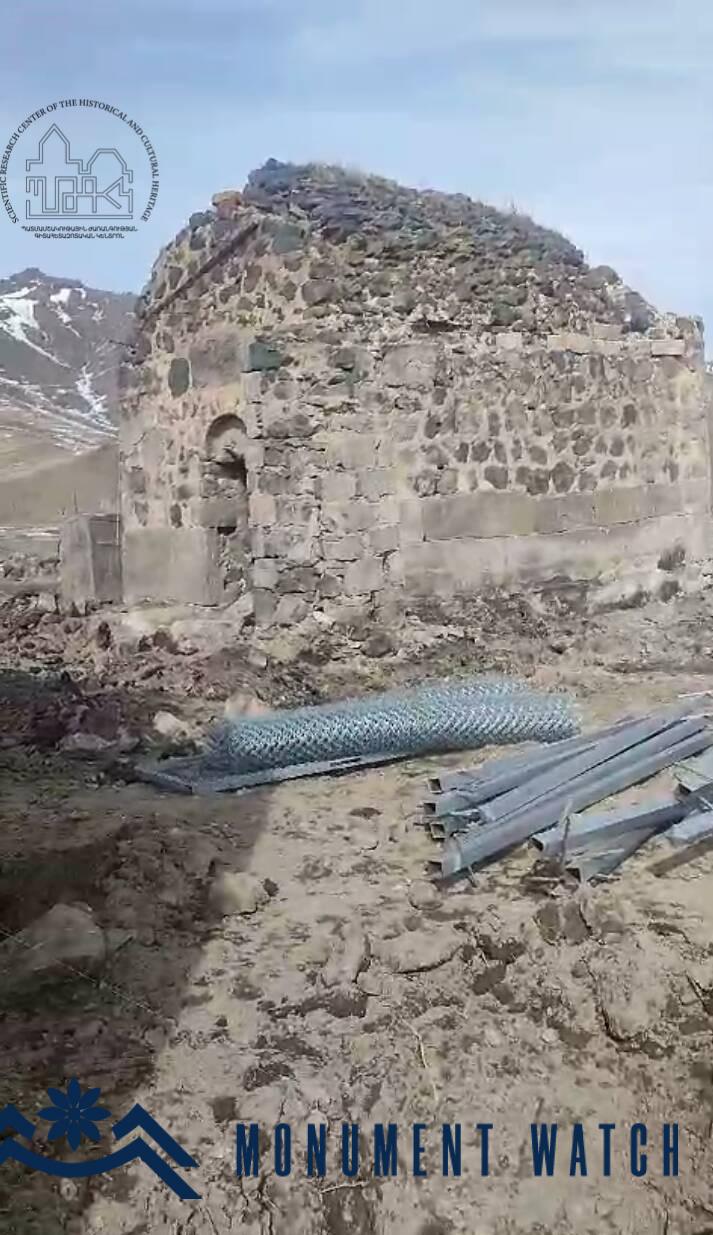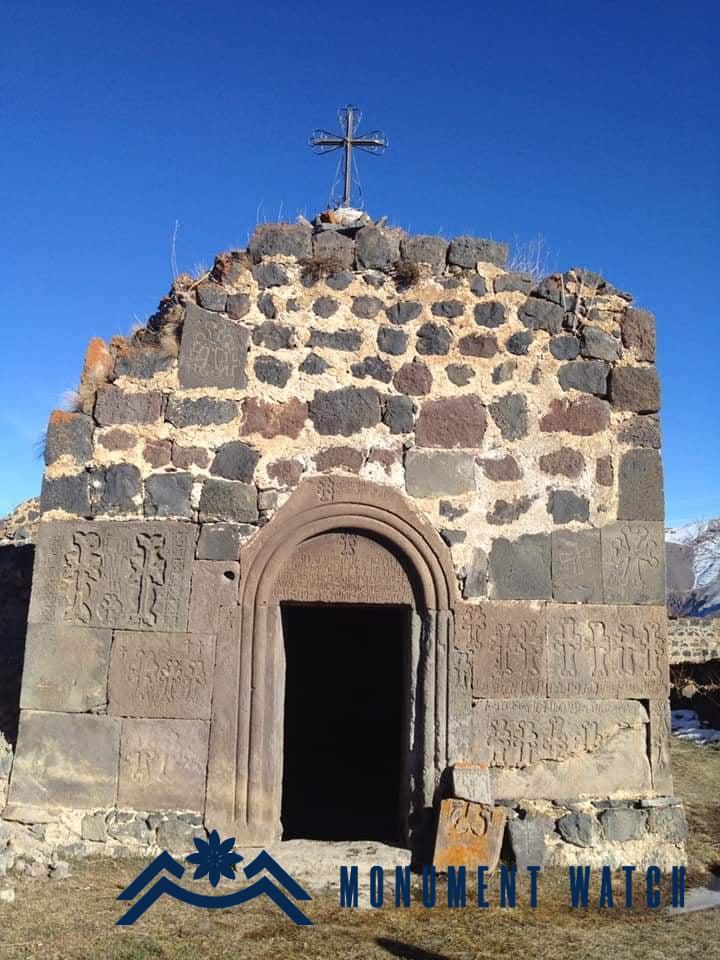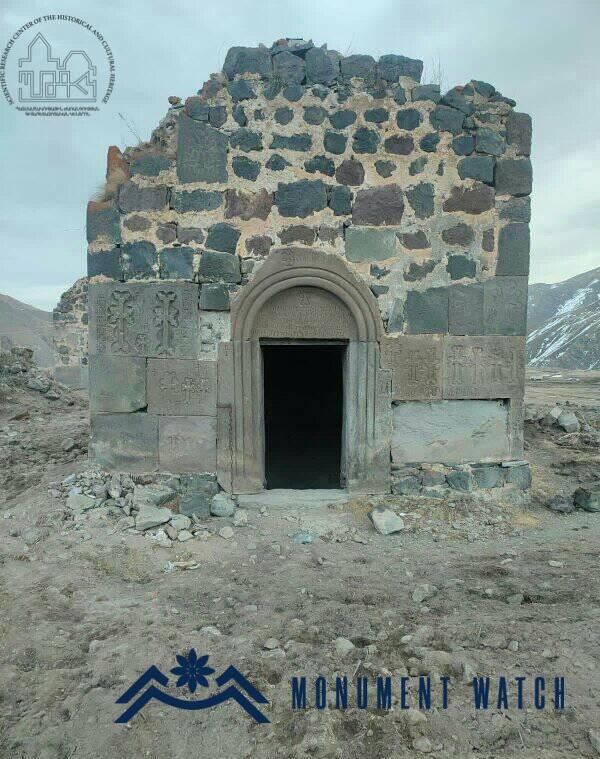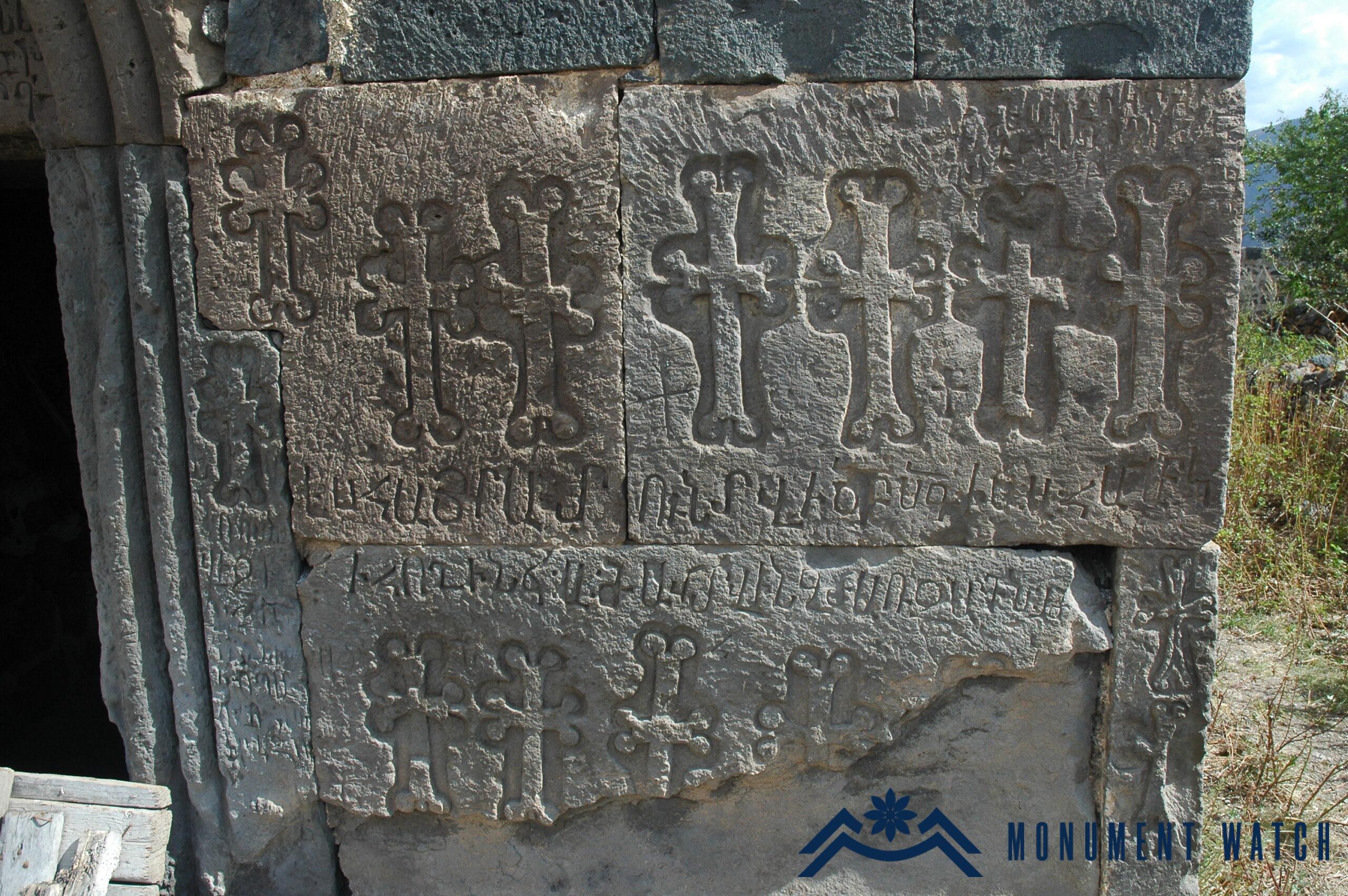It was the Tsar Settlement’s Turn
On February 21, 2024, photos of the Surb Sargis and Surb Grigor churches located in the Tsar settlement of occupied Artsakh were posted on the Facebook page of the "Historical and Cultural Heritage Research Center," sourced from Azerbaijani Internet platforms.
Judging from the photos, it appears that the Azerbaijani side has initiated some construction activities around the churches. The area in front of the Ekeghi residents has been leveled, and traces of construction machinery work are evident. Additionally, based on the images, it seems that an iron fence will be installed around the churches, enclosing the area for construction works to proceed (Figs. 1, 2).
From the photos, it is evident that the church of Surb Sargis has already sustained damage (Figs. 3, 4). Towards the right side of the entrance of the church, there is a polished stone in the lower part adorned with cross images and an accompanying inscription. “I, Hayratun, gave the church of Surb Sargis one hamadki of land. They served me one hour of the liturgy on the holiday of Tsarzard (Palm Sunday). In the year …" (cf. CAE 5, 219, where the unit of land measurement, "hamadki" is represented by "hamabki", fig. 5). The "restorers" vandalized by smashing and removing the second slab, including the second line of the record. It’s worth noting that "hamadki" as a unit of land measurement is only evidenced in the unique inscriptions of Artsakh (Petrosyan 1988), making this vandalism an irreparable loss for Armenian lithography. Azerbaijan's "promises" to invite "international experts" and conduct restorations in accordance with the highest standards, as usual, resulting in shoddy workmanship and the erasure of Armenian heritage.
Due to Azerbaijani "restoration" efforts, there is a significant risk of damaging the appearance of the church. This is because the Azerbaijani side views the inscriptions on many of the churches in occupied Artsakh, as well as the khachkars placed on the walls and the stones with cross motifs, as artificial and not characteristic of "limestone" churches. Considering this perspective, there is a high likelihood of further destruction of inscriptions, crucifixes, and khachkars at the Surb Sargis and Surb Grigor churches.
Our response
It is crucial to underscore Resolution 2582, titled "On the destruction of cultural heritage in Nagorno-Karabakh," which was adopted by the European Parliament in 2022. In this resolution, the European Parliament mandated Azerbaijan to guarantee the exclusion of any interference in Armenian heritage areas, to uphold the principles of authenticity in heritage preservation, and to conduct restoration works exclusively in accordance with those principles.
The 2015 Resolution 2057, adopted by the Standing Committee of the Parliamentary Assembly of the Council of Europe on May 22, underscores the restoration and reconstruction of material cultural heritage in the occupied territories. It emphasizes the significance of preserving the intrinsic value of the heritage and all its details, thereby preserving the identity of the territories. The document also emphasizes the avoidance of implementing reconstruction/renovation policies based on ethnicity and religion of heritage (point 4.2). Moreover, the European Parliament urges all states to maintain the authenticity of the heritage in construction works and to respect all layers of history in the process of restoration and reconstruction, ensuring the preservation of the naturalness and true essence of the heritage (point 4.4.6).
Used sources and bibliography
- CAE 5 - Corpus of Armenian Lithography, Issue 5, Artsakh/compiled by S. Barkhudaryan, Publishing House of the Academy of Sciences of Armenian Soviet Socialist Republic, Yerevan, 1982.
- Petrosyan 1988 - Petorsyan H., Hamadik-hamatik. Term or geographical name // Session of young scientists of the Institute of Archeology and Ethnography, Principles of Reports, Yerevan, p. 63-64.




